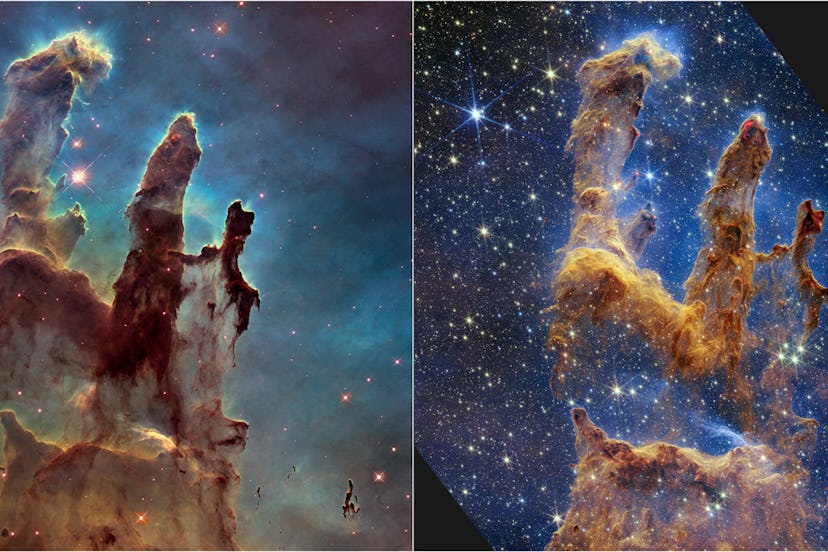New NASA Photo Shows Baby Stars, Space Clouds In Mind-Blowing Detail
NASA shared a new detailed look at the “Pillars of Creation,” first discovered in 1995 by the Hubble Space Telescope, in astoundingly deep new detail.

We’ve seen some incredible photos from NASA’s James Webb Space Telescope (JWST), but new photos from the groundbreaking, ultra-powerful telescopic photographer just captured a stunning snap of something called the “Pillars of Creation,” and the image might just be the most beautiful yet.
But what are the Pillars of Creation? What are we looking at in these photos? And how can you explain it to your kid in a way they’ll understand — and be in awe of? Here’s everything you need to know.
Can You Explain What These ‘Pillars of Creation’ Photos Are Like I’m 5?
Absolutely! If your kid is a fan of Spider-Man, even the less successful adaptations of the character, these new photos might be giving off ‘Sandman’ vibes. But what’s happening is actually way cooler than that. These photos show a new detailed look at the Pillars of Creation, first discovered in 1995 by the Hubble Space Telescope, where new stars are formed.
So, what are we actually seeing here? NASA says these figures that look like hands coming out of nowhere, or dangerous mountain peaks, aren’t actually solid. They’re made up of space clouds of dust and gas. The colors we can see are how the dust and gas look with near-infrared light.
The orange sand-looking clouds are made of dust and gas, and the tips of the pillars that look fiery red and resemble lava are where young stars “shoot out jets of material.” When that material collides with the dust, it creates those really cool wavy patterns, NASA explains.
The bright red orbs just off the pillars are baby stars — which originate when dust and gas collapse under their own gravity and start to heat up. The agency believes these areas, and the baby stars around them, are relatively young in space-time — only a few hundred thousand years old.
According to NASA, these Pillars are in the Eagle Nebula, which is around 6,500 light-years from Earth.
And while we get to ogle at these amazing photos, they will also help push forward space science. NASA says the new view “will help researchers revamp their models of star formation by identifying far more precise counts of newly formed stars, along with the quantities of gas and dust in the region.”
It’s hard to imagine that these things are up there in space! For more information, be sure to check out NASA’s details on these new photos.